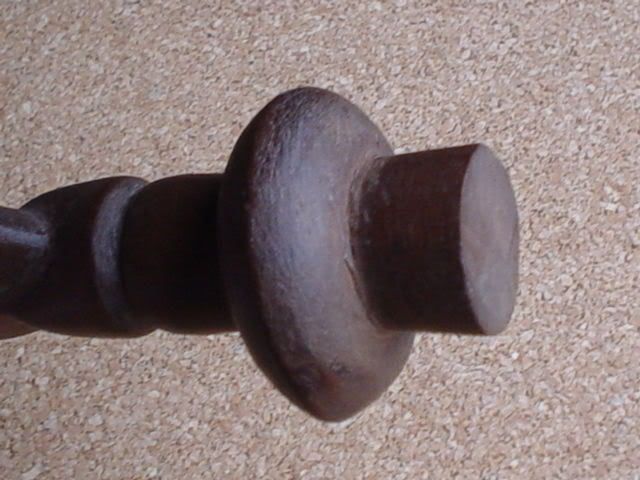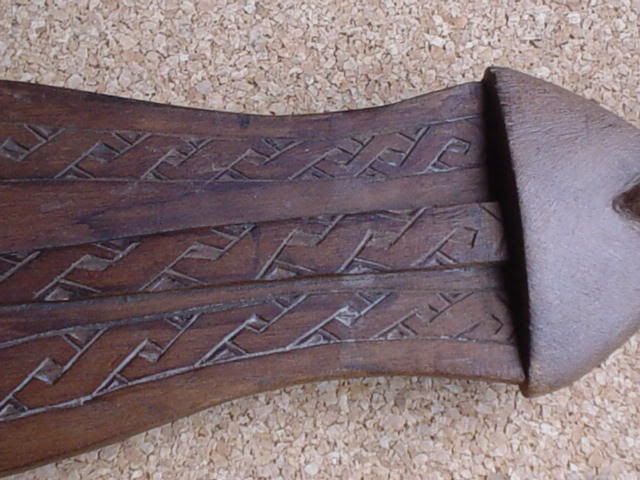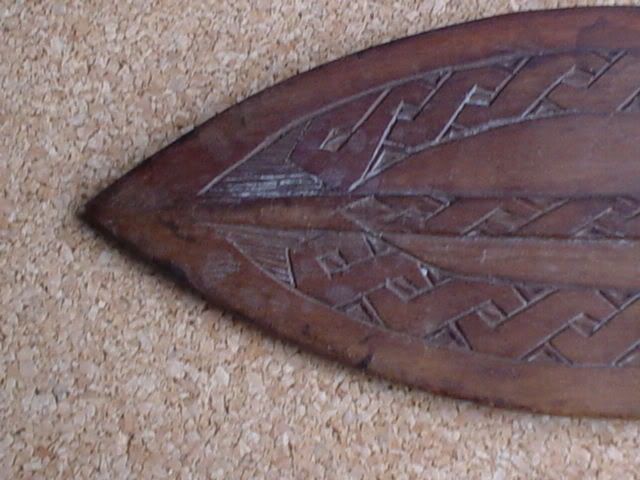
 |
|
|
#1 |
|
(deceased)
Join Date: Dec 2004
Location: East Coast USA
Posts: 3,191
|
Hi Guys
This just arrived today! Tim,Freddy,Derek and Flavio your opinions please. Thanks Lew Last edited by LOUIEBLADES; 13th April 2005 at 05:24 AM. |
|
|

|
|
|
#2 |
|
Member
Join Date: Dec 2004
Location: What is still UK
Posts: 5,806
|
Perfect

|
|
|

|
|
|
#3 |
|
Member
Join Date: Dec 2004
Location: Italia
Posts: 1,243
|
Hello Lew,
i have a very similar example of ikula, with handle without inlaid: in my opinion is very elegant  . . Now my idea is that this kind of ikula aren't so old: i have a picture of '70 (maybe 1974) of a kuba man with an ikula without handle decorated. Of course the knife (but maybe is better dagger) could be older. Any opinion is welcome. |
|
|

|
|
|
#4 |
|
(deceased)
Join Date: Dec 2004
Location: East Coast USA
Posts: 3,191
|
Hi Flavio
I agree with you that the undecorated type dagger is more elegant as for the general age I think they are older than 1970s. The patina on both look too deep to have only been made 30 years ago. My guess is 1930s-40s possibly a little earlier. The Warrior in the photo looks to be around 40 years old and the dagger could have been made for him some 20 years earlier when he acsended to manhood that would make his dagger 1950s era. Who knows if these daggers were handed down as family heirlooms?  Lew |
|
|

|
|
|
#5 |
|
Member
Join Date: Dec 2004
Location: Italia
Posts: 1,243
|
Hi Lew, I think that what you say is ok. The age of undecoreted ikula is old like the ones with an inlaid handle.
Maybe, but this is a big interrogative point, the ikulas with copper and brass inlaid are older. Here in Italy i see in a museum (Prehistoric and Ethnographic Museum of "Luigi Pigorini" in Rome) two ikulas dated to the middle '800 with copper and brass inlaid. Maybe the ikula with zinc or aluminum inlaid are recent. I haven't sure news if the weapons were handed down as family heirlooms, but i think that it could be possible. Among the Papua (New Guinea) or the Maori, in the early 1900, the stone axe were passed from father to son as a great simbol of power. |
|
|

|
|
|
#6 |
|
Member
Join Date: Feb 2005
Location: Clearwater, Florida
Posts: 371
|
Nice Ikul Lew and Flavio....when I first started collecting an African specialist took me under his wing, with the Ikula being by far his preferred weapon style (sorry for the reminiscing) so they've made an impression on me ever since, yet it's one piece I've never been fortunate enough to win or possess..
Very elegant weapons that apparently have a high place in the rank/prestige and ceremonial categories as well. (A three-fer?**grin**) Mike |
|
|

|
|
|
#7 |
|
Member
Join Date: Dec 2004
Location: What is still UK
Posts: 5,806
|
On mine the decoration is like the metal style,only carved in the wood.The detail picture just about shows so.Tim
|
|
|

|
|
|
#8 |
|
Member
Join Date: Dec 2004
Location: Sint-Amandsberg (near Ghent, Belgium)
Posts: 830
|
The Kuba knives are indeed beautiful.
Here's a wooden version :    
|
|
|

|
|
|
#9 |
|
Member
Join Date: Dec 2004
Location: Italia
Posts: 1,243
|
Hello Freddy, the wooden ikula is very beautiful!! So we can also continue with the "classic" ikula with handle inlaid?? Sure!!
 . . If you look at the picture with a close up of the head of the handle you can see a decoration that remembers another decoration known as "Node of Salomon" that is quite frequent also on the Songye sword, knife and axe. I think that is rather interesting to notice as a symbol of Christian - Hebrew type is used also in groups with religious beliefs so different. What do you think about this? |
|
|

|
 |
|
|